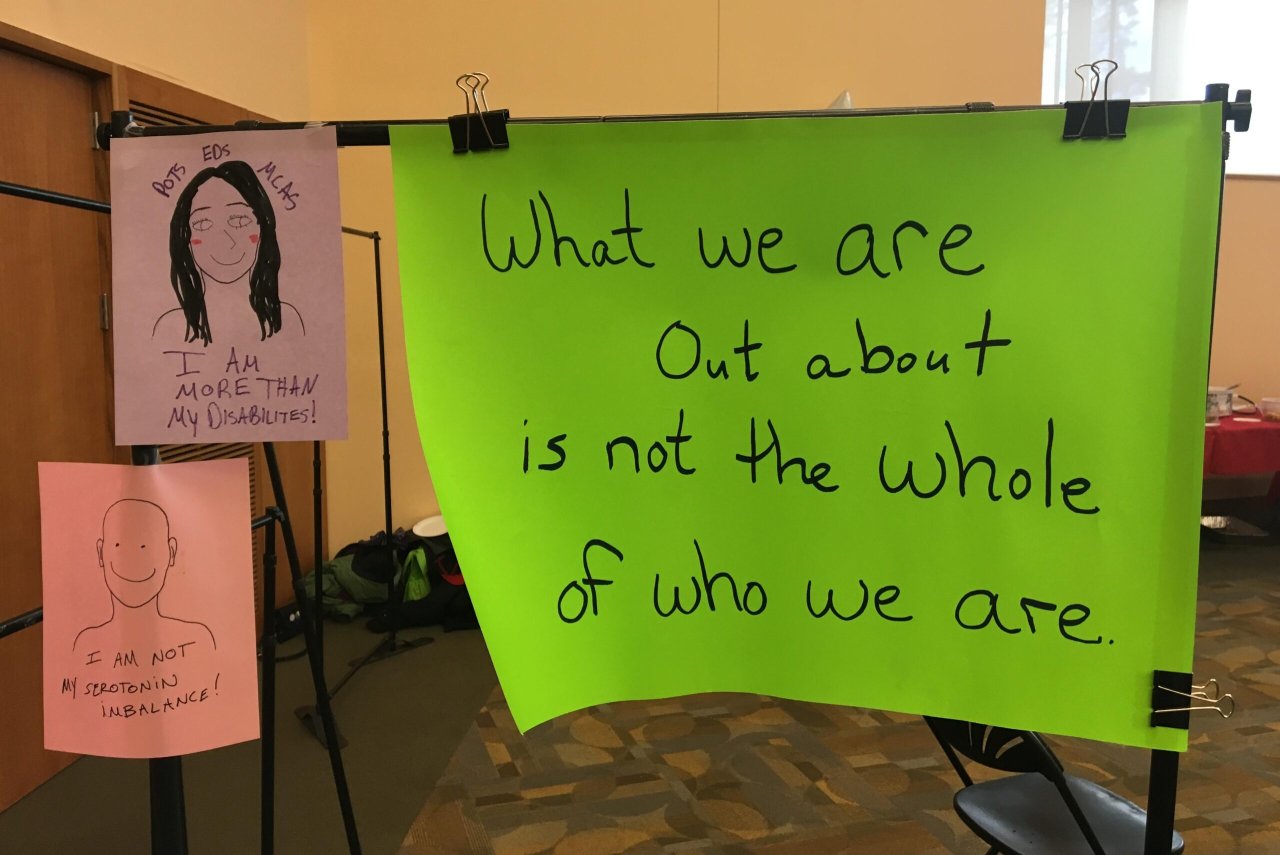When one thinks of the phrase “coming out,” usually the first topic that comes to mind is sexuality. However, there are multiple aspects of one’s identity than can be difficult to talk about, elements of ourselves which are not often visible to those around us. These identities can incorporate a plethora of topics, such as gender identity, religion, mental illness, addiction, poverty, or other past struggles. While they do not define us, these identities may shape our life experiences and perspectives.

While today I enjoy the freedom of being open about my sexuality, another aspect of my identity— my disability— is an integral part of me that frequently involves a “coming out” process. In my early teenage years, I never had difficulties talking about my illnesses. One of them, Ehlers-Danlos Syndrome— a connective tissue disorder defined by extreme joint hypermobility— does not become symptomatic until later years of a patient’s life. When I was younger, EDS was nothing more than a fun fact to pull out during middle school icebreakers:
“By the way, I have Ehlers-Danlos Syndrome!”
“Oh, what does it do?”
“Nothing really, but it makes me very flexible. Want to see a cool trick?”
Come high school, the situation drastically changed. I suddenly became very ill as more EDS complications developed, and I was living in a state of constant chronic pain, all of which was invisible to others around me. By senior year, I went on home instruction for the entirety of the third and fourth quarters and was struggling with feeling isolated. It felt like everything I was proud of— my academics, my friends, and my good relationships with teachers— was disintegrating over my head and threatening to crush me under the weight of it all.
Today, a soon-to-be junior at Arcadia, I’m a radically different woman than the ill and lost teenage girl grappling just to graduate high school. Surrounded by love and support from my family, friends, and professors, I have developed a new sense of self-assurance and determination to not let my illness deter me from reaching happiness. But in full disclosure, there are still days where I struggle to shake off the emotional scars and the weight of the hurt I have endured to get here. I feel embarrassed emailing my professors when I am too sick to attend class. I worry that if I back out of plans with friends since I am feeling unwell, they will permanently leave me behind. If I tell this person about my disability, how will they see me differently? These scenarios and questions are constantly trying to push against my hardened exterior and confidence, threatening to leak out in a pool of anxiety and fear. Facing these worries directly, living openly and unashamedly with my disability, is a learning process which I’m admittedly still taking notes on.
However, just in time for Ehlers-Danlos Syndrome Awareness Month (May), I was able to take a broad step toward the process of coming out about my disability. The University seminar “Coming Out” is centered around exploring the facets of one’s identity and examining how the coming out process can be applicable to so many experiences, in addition to sexuality. The finale of the class is the “Coming Out Show,” an art exhibit which features sculptures, paintings, collages, and songs based on the coming out stories of members of the Arcadia community. This semester, I had the opportunity to be a panelist for the Coming Out seminar, and was selected by a student taking the class to be interviewed as a muse for their artwork.

I was extremely nervous to tell my story about living with an invisible illness. I was wondered if the students would take me seriously, roll their eyes, or think I’m melodramatic— but none of that happened. As I spoke, I made eye contact with a student in the class, and I could tell by their expression that they got it. They did not judge me for my condition, but understood and empathized with me. When class was over, they approached me, and after talking at one of the lounge tables at the top of Easton Hall for nearly half an hour, I discovered that they had EDS too. They decided to create their art project on my personal story, and I was elated to have met someone who could connect with me on a deeper level that not many others would be able to.
My new friend, Ev Smith ’19, created an art piece that honored my experience with invisible illness so well it brought me to tears. The interactive sculpture featured an outline of a person, with phrases such as “But you don’t look sick” and “You’re too young to have joint pain!” inscribed on it. Viewers could lift this outer panel up to reveal an inner skeleton with disjointed bones. The piece was representative of how, on the outside, people who have EDS may look perfectly fine. The illness is under the surface.
Having my story told at the Coming Out Show was not only exciting, but also incredibly healing. For so many years, EDS was an antagonistic force in my life, something that I wanted shield myself from, and something I wanted to shield from others so that they did not judge or hurt me. Having my experiences with EDS out in the open and honored helped me in my journey of trying to find peace with this aspect of my identity.
Like the classic phrase “don’t judge a book by its cover,” if we take the time to respect and understand the aspects of one another which lay beneath the surface, we’ll be one step closer to making our communities a kinder place for everyone.



